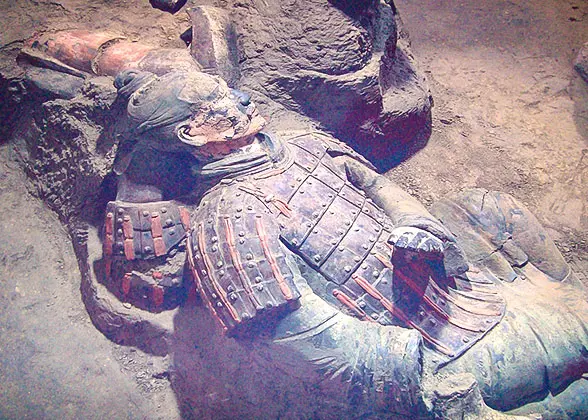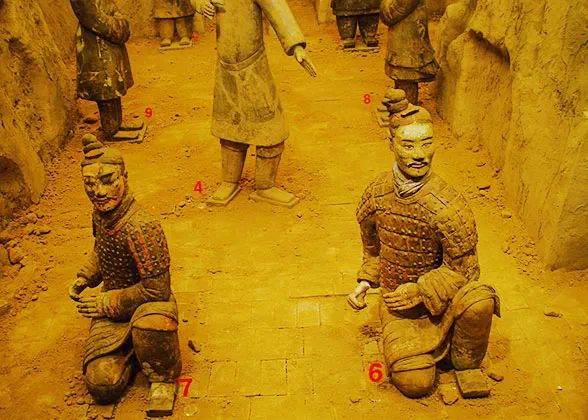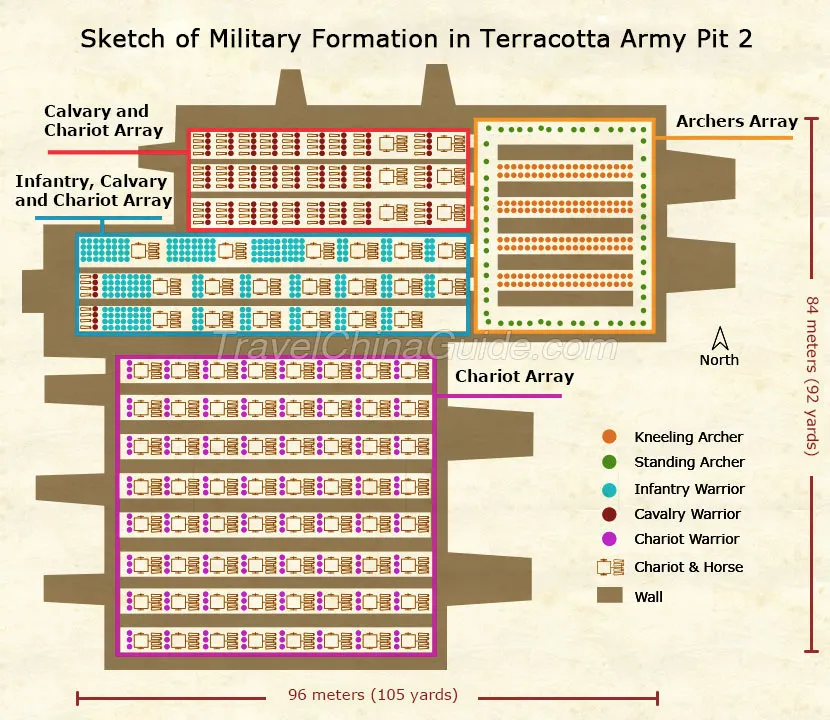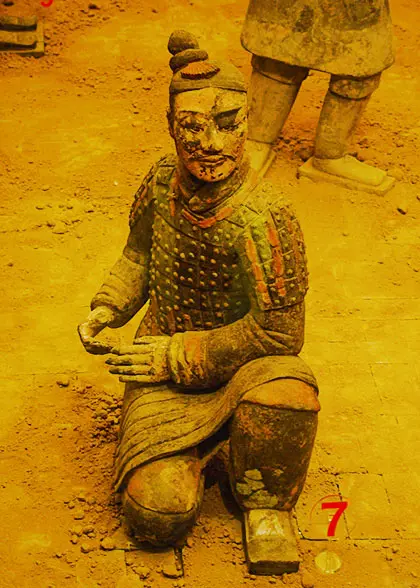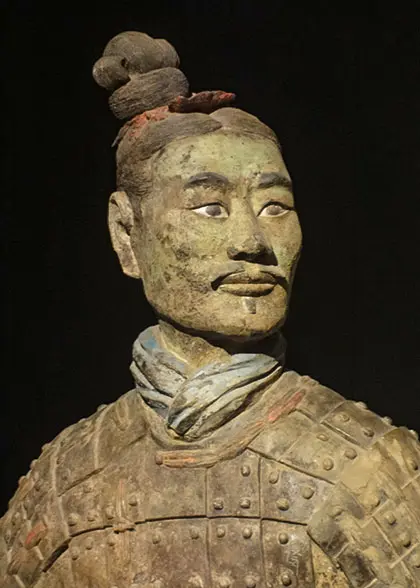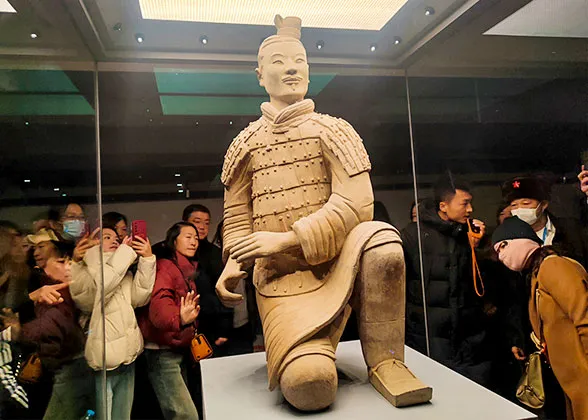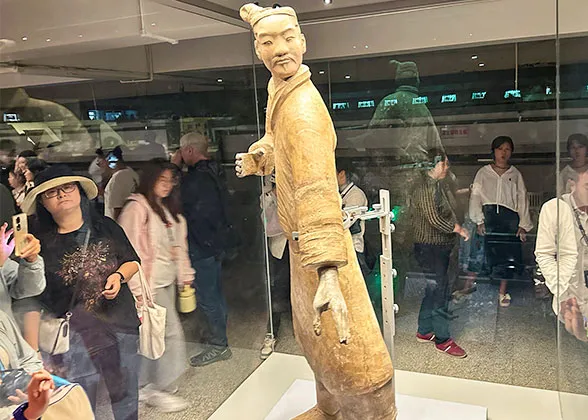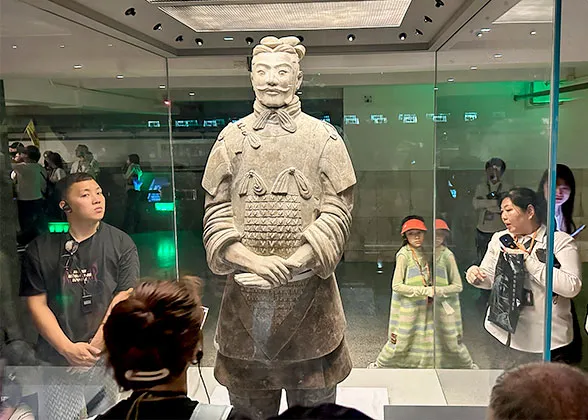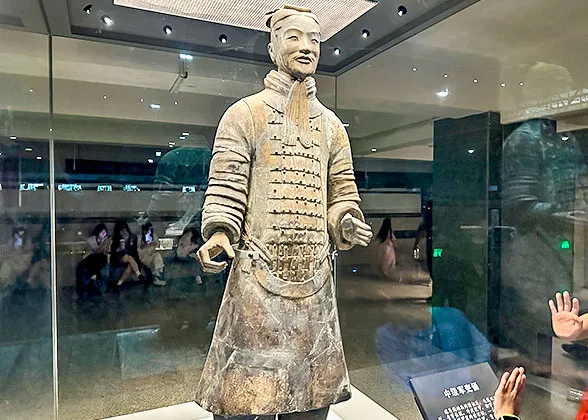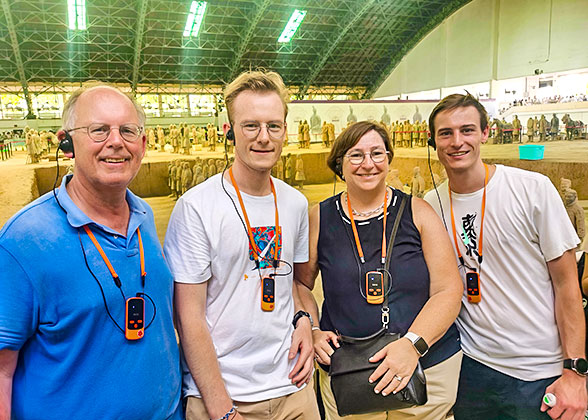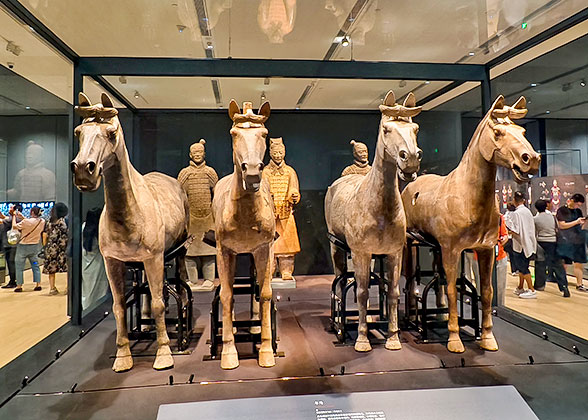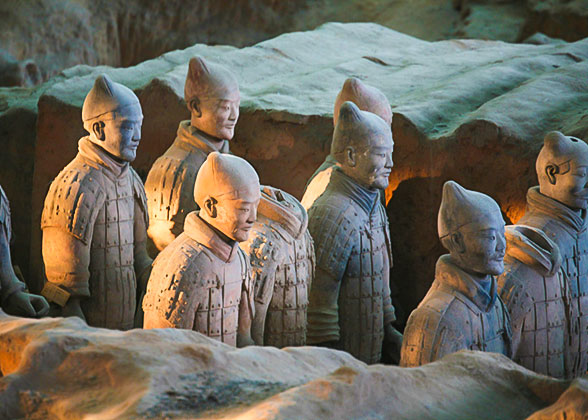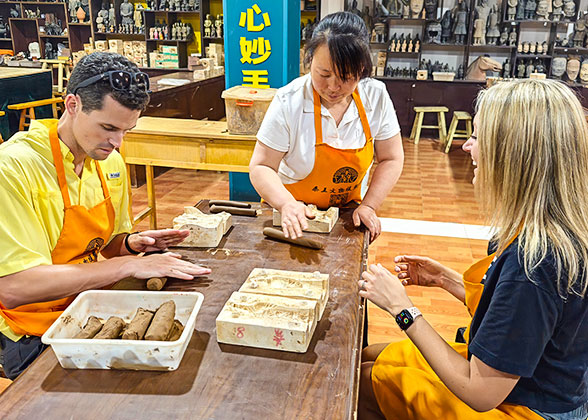Terracotta Warriors Pit 2
Discovered in May 1976 and opened to the public on October 1, 1994, Pit 2 continues to yield discoveries. Notably, in December 2024, archaeologists unearthed three terracotta horses and three warriors, marking the first discovery of a high-ranking officer in this pit since its initial excavation.
1994.
|
|
Massive Underground Integrated Army
Pit 2 spans approximately 124 meters (407 feet) east to west and 98 meters (322 feet) north to south, with a depth of 5 meters (16 feet) . It features a large-scale, east-facing military formation, showcasing a highly organized battle array. It has two northern sloping entrances and four on each of the eastern and western ends. As a complex mix of chariots, cavalry, and infantry units, this pit showcases greater architectural complexity and a more diverse array of terracotta warriors and horses than other pits. According to preliminary estimates, it contains over 80 chariots, approximately 1,300 terracotta warriors and horses, and thousands of bronze weapons. Current excavations have uncovered 224 terracotta warriors, 11 chariots, 96 terracotta horses, and numerous weapons, including the first-discovered terracotta general, the kneeling archer, and the cavalry warrior with a saddled horse. The warriors are arranged in four distinct zones, forming an intricate underground army that vividly illustrates the Qin dynasty's (221 - 207 BC) advanced multi-branch military organization system.
This array has a square shape, surrounded by four corridors on all sides, with a total of 332 standing archers inside. In the center of the square, there are four east-west passageways where 160 kneeling archers are aligned in a squatting position, while 172 standing archers encircle them. The distinct green-faced terracotta warrior and well-known colored warriors were discovered inside this array in 1999.
![]() See more about True Colors of Terracotta Warriors
See more about True Colors of Terracotta Warriors
|
|
Chariots Array in the South
This array spans approximately 52 meters (170.6 feet) from east to west and 48 meters (157.5 feet) from north to south, arranged in eight rows of eight chariots each, totaling 64 chariots. Each chariot is drawn by four life-sized terracotta horses. The charioteer stands at the center, arms extended forward as if holding reins. Flanking the charioteer are two warriors, each gripping a long weapon in one hand and bracing against the chariot with the other, known as the "Left Chariot Warriors" and "Right Chariot Warrior."
![]() See more about Terracotta Chariot Warriors
See more about Terracotta Chariot Warriors
Infantry, Calvary, and Chariot Array in the Center
Cavalry and Chariot Array in the Northwest
This array measures about 50 meters (164 feet) from east to west and 23 meters (75.5 feet) from north to south, with three east-west passageways where all the chariot warriors, cavalry warriors, and horses are aligned. Each cavalry warrior stands to the left front of his horse, arranged in disciplined rectangular groups of four horses. This array confirms that cavalry in the Qin Dynasty was already a fully equipped and independent military branch.
![]() See more Military Formation of Terracotta Army
See more Military Formation of Terracotta Army
Five Display Cases - Revealing Exquisite Details of Terracotta Warriors
On the northern side of Pit 2, five meticulously restored terracotta warriors are displayed in glass cases, all excavated from Pit 2: a kneeling archer, a standing archer, a cavalry warrior, a high-ranking officer, and a middle-ranking officer. Each showcases remarkable craftsmanship and vivid details.
This is the most intact terracotta warrior ever unearthed, discovered at the center of Pit 2’s archers array. Dressed in a battle robe with armor overlay, the figure has a hair bun tied on the left side of his head. Its right knee touches the ground while the left one is bent, hands are positioned on the right side with one above the other, as if drawing a crossbow and ready to shoot.
|
|
With the left leg slightly bent and right leg extended backward in a stable stance, the warrior raises his left arm outward slightly while bending the right arm at the chest, vividly representing the moment before releasing an arrow.
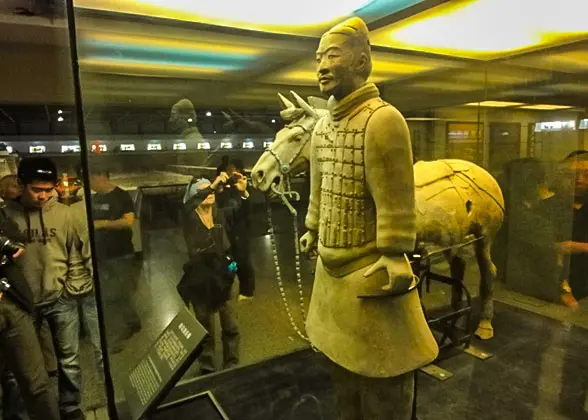 |
| Cavalry Warrior from Pit 2 |
Dressed in lightweight and short-sleeved armor and long pants, this warrior wears a rounded hat and short boots, standing tall and alert.
4. High-ranking Officer
Standing approximately 197 centimeters (6.5 feet) tall, this figure wears the pheasant-feather crown and leather armor, with intricate knots on the chest, back, and shoulders. Its slightly protruding abdomen, fitted leggings, and square-toed boots indicate high status. Specifically, the protruding abdomen suggests a life of relative ease with less physical labor, while custom-fitted armor and boots, which are costly to produce, serve as clear signs of elite status in Qin Dynasty society.
5. Middle-ranking Officer
Measuring around 191 centimeters (6.3 feet), this officer wears a double-plate long crown and a leather chest plate. Its left hand appears to rest on a sword, while the slightly narrowed eyes and faint smile give it an approachable expression.
|
|
![]() See more:
See more:
Headgears of Terracotta Warriors
What Are the Terracotta Warriors Wearing?
The On-site Excavation of Pit 2
The exhibition hall of Pit 2 currently showcases preserved ceiling beams that demonstrate Qin Dynasty construction techniques and original warrior excavation sites, including unrestored figurine fragments. Simultaneously excavating, protecting, and displaying, Pit 2 allows visitors to witness archaeological excavations firsthand. During spring and autumn weekdays, visitors might catch the archaeological team conducting on-site excavations. Of special note is a high-ranking officer found in December 2024. The careful cleaning and restoration of the officer was conducted in a dedicated laboratory chamber set up inside the pit by experts, with key stages publicly demonstrated.
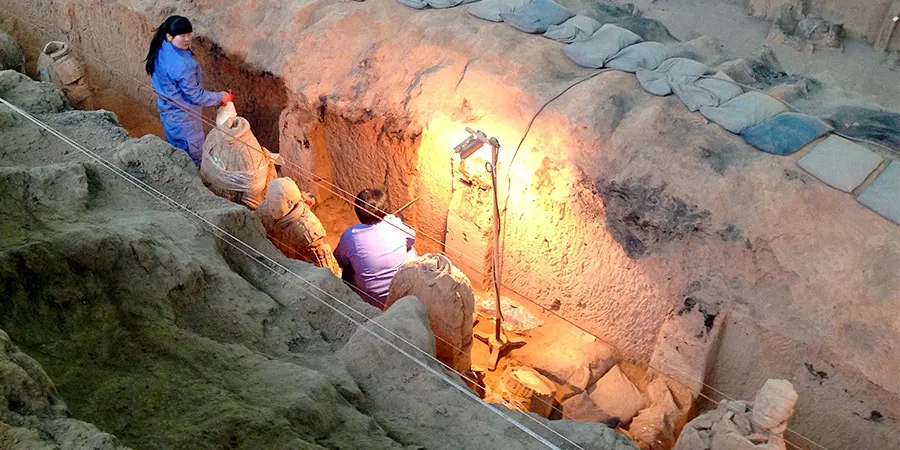 |
| On-site Excavation and Restoration |
Tips for Visiting Terracotta Warriors Pit 2
![]() Read more:
Read more:
Why are there partition walls in the pit of Terracotta Army?
Second Excavation of Pit 2 of Terracotta Army
![]() Next: Terracotta Warriors Pit 3
Next: Terracotta Warriors Pit 3
